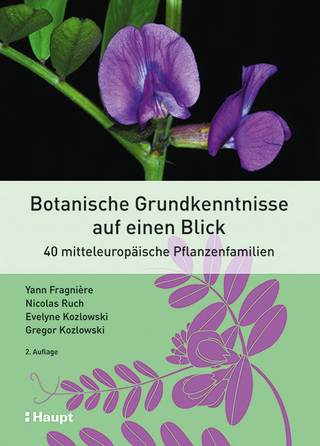
Measuring Heavy Metal Contaminants in Cannabis and Hemp
CRC Press (Verlag)
978-0-367-41737-6 (ISBN)
The surge of interest in cannabis-based medicinal products has put an extremely high demand on testing capabilities, particularly for contaminants such as heavy metals, which are naturally taken up through the roots of the plants from the soil, growing medium, and fertilizers but can also be negatively impacted by the grinding equipment and extraction/distillation process. Unfortunately, many state regulators do not have the necessary experience and background to fully understand all the safety and toxicological issues regarding the cultivation and production of cannabis and hemp products on the market today.
Measuring Heavy Metal Contaminants in Cannabis and Hemp offers a comprehensive guide to the entire cannabis industry for measuring elemental contaminants in cannabis and hemp. For testing labs, it describes fundamental principles and practical capabilities of ICP-MS and other AS techniques for measuring heavy metals in cannabis. For state regulators, it compares maximum contaminant limits of heavy metals with those for federally regulated pharmaceutical materials. For cultivators and processors, it helps them to better understand the many sources of heavy metals in cannabis. And for consumers of medical cannabis, it highlights the importance of choosing cannabis products that are safe to use.
Other key topics include:
The role of other analytical techniques for the comprehensive testing of cannabis products
Tips to optimize analytical procedures to ensure the highest quality data
Guidance on how to characterize elemental contaminants in vaping liquids and aerosols
Suggestions on how to reduce errors using plasma spectrochemistry
The role of certified reference materials to validate standard methods
Easy-to-read sections on instrumental hardware components, calibration and measurement protocols, typical interferences, routine maintenance, and troubleshooting procedures
Written with the cannabis testing community in mind, this book is also an invaluable resource for growers, cultivators, processors, testers, regulators, and even consumers who are interested in learning more about the potential dangers of heavy metal contaminants in cannabis and hemp.
Robert (Rob) Thomas is the principal of Scientific Solutions, a consulting company that serves the training, application, marketing and writing needs of the trace ele¬ment user community. He has worked in the field of atomic and mass spectroscopy for more than 45 years, including 24 years for a manufacturer of atomic spectroscopic instrumentation. He has served on the American Chemical Society (ACS) Committee on Analytical Reagents (CAR) for the past 20 years as leader of the plasma spectrochemistry, heavy metals task force, where he has worked very closely with the United States Pharmacopeia (USP) to align ACS heavy metal testing procedures with pharmaceutical guidelines. Rob has written almost 100 technical publications, including a 15-part tutorial series on ICP-MS. He is also the editor and frequent contributor of the Atomic Perspectives column in Spectroscopy magazine. In addition, Rob has authored three textbooks on ICP-MS and in 2018 completed his fourth publication, entitled Measuring Elemental Impurities in Pharmaceuticals: A Practical Guide. He has spent the past two years researching and writing this new book, Measuring Heavy Metal Contaminants in Cannabis and Hemp. Rob has an advanced degree in analytical chemistry from the University of Wales, UK, and is also a Fellow of the Royal Society of Chemistry (FRSC) and a Chartered Chemist (CChem).
1. The Importance of Testing Cannabis: An Overview of the Analytical Techniques Use. 2. The Importance of Measuring Heavy Metals in Cannabis and Hemp. 3. What the Cannabis Industry Can Learn from Pharmaceutical Regulations. 4. An Overview of ICP Mass Spectrometry. 5. Principles of Ion Formation. 6. ICP-MS Sample Introduction. 7. Plasma Source. 8. Interface Region. 9. Ion Focusing System. 10. Mass Analyzers: Quadrupole Technology. 11. Mass Analyzers: Double-Focusing Magnetic Sector Technology. 12. Mass Analyzers: Time-Of-Flight Technology. 13. Mass Analyzers: Collision/Reaction Cell and Interface Technology. 14. Ion Detectors. 15. Peak Measurement Protocol. 16. Methods of Quantitation. 17. Review of ICP-MS Interferences. 18. Routine Maintenance. 19. Sampling and Sample Preparation Techniques. 20. Performance and Productivity Enhancement Tools. 21. Coupling ICP-MS with Chromatographic Separation Techniques for Speciation Studies. 22. A Practical Guide to Reducing Errors and Contamination Using Plasma Spectrochemistry. 23. the Importance of Laboratory Quality Assurance. 24. Measurement of Elemental Constituents of Cannabis Vaping Liquids and Aerosols by ICP-MS. 25. Fundamental Principles, Method Development Optimization and Operational Requirements of ICP-Optical Emission. 26. Atomic Absorption and Atomic Fluorescence. 27. Other Traditional and Emerging Atomic Spectroscopy Techniques. 28. What Atomic Spectroscopic Technique Is Right for Your Lab? 29. Do You Know What It Costs to Run Your AS System? 30. How to Select an ICP Mass Spectrometer: Some Important Analytical Considerations. 31. Glossary of Terms Used in Atomic Spectroscopy. 32. Useful Contact Information.
| Erscheinungsdatum | 01.10.2020 |
|---|---|
| Zusatzinfo | 44 Tables, black and white; 232 Illustrations, black and white |
| Verlagsort | London |
| Sprache | englisch |
| Maße | 178 x 254 mm |
| Gewicht | 1088 g |
| Themenwelt | Naturwissenschaften ► Biologie ► Botanik |
| Naturwissenschaften ► Chemie ► Analytische Chemie | |
| ISBN-10 | 0-367-41737-5 / 0367417375 |
| ISBN-13 | 978-0-367-41737-6 / 9780367417376 |
| Zustand | Neuware |
| Informationen gemäß Produktsicherheitsverordnung (GPSR) | |
| Haben Sie eine Frage zum Produkt? |
aus dem Bereich


